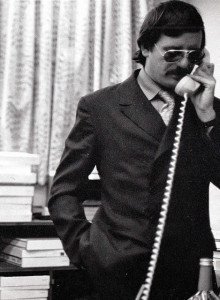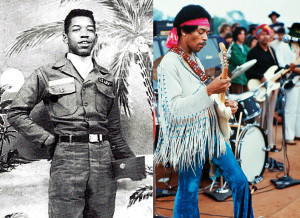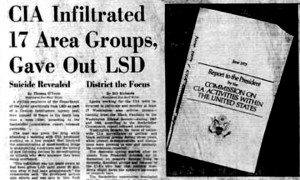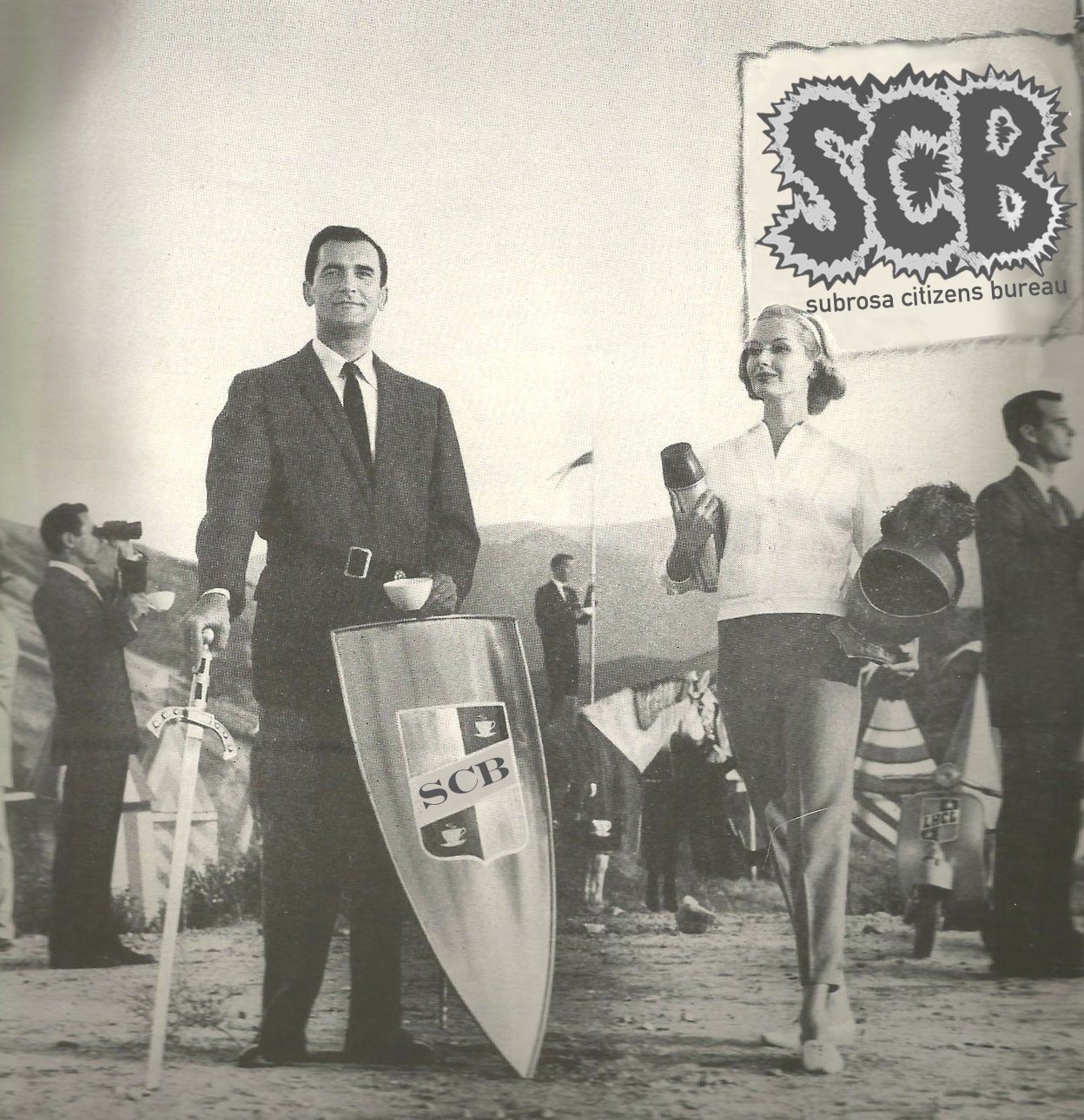An Introduction to the Secret History of Rock and Roll

We think we know about Rock and Roll (aka “Rock”).
Ever since Rock and Roll emerged in the United States in the mid-Twentieth Century, its history has been told and re-told in countless books, articles, blogs, dramatizations, biopics, dissertations, documentaries, etc. The history of Rock has been endlessly investigated and theorized over by journalists, academics, philosophers, historians, novelists, poets, etc. Nearly all the Rock stars and major players in the industry have written memoirs or had weighty books written about them. They’ve all been interviewed relentlessly about everything from philosophy to the most quotidian aspects of their lives. What can there possibly be left to say?
Of course, there are enduring mysteries.
Suspicious circumstances surround the sudden deaths of many Rock stars, including Brian Jones, Jimi Hendrix, Jim Morrison, Kurt Cobain and others. There’s good reason for speculation. Rock’s history is rife with dangerous operators with murky backgrounds. The intimidating Michael Jeffrey (manager of Jimi Hendrix), for example, was a former MI-6 agent, well-connected to both the U.K. government and London criminal underworld. Jeffrey stole all of Hendrix’s money and hid it in offshore accounts. He also appears to have arranged the kidnapping and rescue of Hendrix shortly before the guitarist’s sudden death in 1970.

Michael Jeffrey, ex MI-6 manager of Jimi Hendrix
In 1973, Jeffrey died on an Iberia Airlines DC-9 after a mid-air collision over Nantes, France. The country’s air traffic control system had been taken over that day by military personnel due to a worker’s strike. The collision was purportedly caused by an error in the substitute controller’s directions.
In addition to mysteries, there are many popular misconceptions about Rock stars, including Hendrix, who is widely regarded as a peacenik hippie icon. Rock journalists often refer to his vivid rendition of the “Star Spangled Banner” before the sleepy Woodstock nation as some sort of excoriation of U.S. militarism. In fact, Hendrix (a former paratrooper in the prestigious 101st Airborne Division based out of Ft. Campbell, Kentucky) was an ardent anti-communist who fully supported U.S. military intervention in Southeast Asia. This was often a confounding discovery for contemporaries, as relayed by Eric Burdon (of the Animals) who recalled watching an anti-war protest with Hendrix from the rooftop of their shared flat in London.
“His reaction was quite a surprise to me,” Burdon recalled. “He said he was still a soldier, and still trained to think like one. He was pissed about the protests.” As the demonstration became louder, Jimi grew visibly angered. Jimi said: “When the Reds come down from China and they take over North Vietnam, and South Vietnam, and then they go for Japan, and beyond, then are you going to understand why the U.S. is there fighting those guys?”
Source: 2005 biography Room Full of Mirrors by Charles Cross.
Far from a peacenik, the Voodoo Child was a hawkish patriot who probably would have played U.S.O. shows if he could’ve gotten away with it. He spoke out in support of the Vietnam war with several interviewers and once likened the U.S. soldiers there to the liberators of Normandy to a French journalist. Throughout his brief period of non-posthumous fame, Hendrix’s sympathies were with the U.S. military, not the protesters and certainly not the Vietcong. Much of his later work is imbued with the sentiment, including the superlative “Machine Gun,” “Izabella,” and his now iconic version of the national anthem, which critics derided as disingenuous when he began dropping it into sets in mid-1968.

Contrary to popular belief, Hendrix was a patriot who supported the U.S. military during the Vietnam war.
Although Hendrix never deployed and got out after only one year by pretending to be gay (he told interviewers he was forced out by an ankle injury), he remained proud of his service and stayed tight with military friends, including bassist Billy Cox from the 101st, who he brought into Band of Gypsys, and guitarist Larry Lee, who had just completed his tour of duty in Vietnam and only been home for two weeks when Jimi rang him up and asked if he would join the group he was putting together for Woodstock. A week later, Lee was there when his friend performed the “Star Spangled Banner.”
_______
Despite mysteries, misconceptions, and differing views, there still remains a basic orthodoxy of belief concerning the History of Rock and Roll. Inscribed in the pages of countless books, magazines, blogs and fanzines, engraved on the walls of the Rock and Roll Hall of Fame, the official History of Rock contends that the genre’s enduring music of the later 1960’s was part of a larger youth-based counterculture movement rooted in opposition to the Vietnam War and geared toward creating a more just and equitable society. From this vantage, television and news media of the period are regarded as benevolent forces that aided the counterculture protest movements against an oppressive system. A recent article about Timothy Leary and Marshall McLuhan on Boing Boing expresses the prevailing wisdom:
During the culture wars of the ‘60s, this became known as the “Generation Gap” and led to a suppression of youth protest culture by the ruling class. The new medium of television broadcast it to every living room, from civil right protestors being attacked by sheriffs’ dogs to hippies being busted for smoking pot to anti-war demonstrators being beaten by cops to the rows of body bags in the jungles of Vietnam.
Marshall McLuhan gave Leary the phrase “Tune in, turn on, and drop out” and that’s what the media-enabled LSD guru instructed the youth to do. The love generation begat hippies and a youth protest movement that ended the Vietnam war and helped usher in greater civil rights for African-Americans and other oppressed groups. The new Rock stars had new attitudes about war, materialism, family, spirituality, drug use, and sex. The young generation followed their lead or rode the same zeitgeist and society changed rapidly in a short span of time. Today, the powerful Rock and Roll of the later 1960’s is widely viewed as an honest, liberating force that made things better for people by getting everyone to loosen up and feel more free. Like the movie Footloose, basically.
That is the accepted official history.
In recent years, however, a radical counter-narrative has gained traction. We’ll call it the Secret History of Rock and Roll.
The Secret History of Rock exists within a broader scope of history than the Rock journalist typically brings to bear on his subject. It contends that the rapid ascent of 1960’s psychedelic counterculture was the engineered result of a long-range plan that began about half a century earlier. The true architects of the late 1960’s counterculture were not rebels of the young generation but pernicious members of the elite intelligentsia of earlier generations, such as Aldous Huxley, Edward Bernays, Gordon Wasson, Aleister Crowley and others. The counterculture didn’t gestate at coffeehouses, jazz festivals and universities. Instead, it was cooked up at places like the Esalen Institute, Macy Conferences, and Pentagon. Specific Rock stars and other countercultural icons can be identified as complicit in the scheme.
In short, the psychedelic movement and everything associated with it – acid Rock, LSD, free love, marijuana, hippies, merry pranksters, new age thinking, etc – was sold to the youth population by a network of ruling elite in order to debase mass culture and make succeeding generations dumber and easier to control. Additionally, there is an occult element to this network whose adherents seek to normalize their depraved interests and beliefs into society through constant endorsement by mass media.
Unlikely as it may seem, there is a wealth of facts to support the thesis. Some are widely known, others recently uncovered. These facts dispute and contradict a version of history widely accepted as true. Without doubt, many will find the Secret History of Rock too shocking or silly to be taken seriously. Disbelievers will be unable to countenance the type of large-scale behavioral-engineering that animates the Secret History. They will laugh at the notion that any acclaimed 1960’s Rock star could have been an agent for the military intelligence community or that an occult network could exist within government. They will write this off as nutty conspiracy theory.
Others, however, may engage the topic with an attitude tempered by knowledge of the massive MKULTRA program, which explored various methods of brainwashing and mind-control and was carried out in secrecy by the CIA’s Scientific Intelligence Division from 1953 until its reported termination in 1973. MKULTRA is rarely addressed by mainstream media, except in a fictional context, but its existence is a matter of record. In 1977, the Senate held a joint committee hearing led by Sen. Ted Kennedy on MKULTRA and published their findings, which may be viewed here. On the order of outgoing CIA Director Richard Helms, nearly all the MKULTRA records were destroyed in 1973.


Authentic image from a horrifying MKULTRA experiment. The notation states that the child’s memory was erased and her brain was regressed to the mental state of a newborn baby.
The comparatively few surviving official records concerning MKULTRA were obtained through a Freedom of Information Act (FOIA) Request filed by writer (and former State Department intelligence attache) John Marks and released by the Carter administration in 1977. Approximately 16,000 pages of documents inadvertently escaped Helms’ order because they were stored in the CIA’s budgeting and fiscal office (inventory of these documents may be viewed here). They were made available to Marks, who used the data to write The Search for the Manchurian Candidate (1979), a seminal work that has fallen into some disfavor due to the author’s tendency to err on the side of caution and incredulity over certain aspects of MKULTRA.
Although Marks never questioned it, there is good cause to doubt the official story that the LSD genie simply escaped the bottle and psychedelic culture sprang up as accidental “blowback.” As part of MKULTRA and prior initiatives, the CIA conducted vast amounts of unethical and inhumane experimental research into LSD for decades before the Summer of Love, 1967. Ultimately, after much testing and experiments with willing and unwilling subjects, the CIA concluded that LSD induced a highly-suggestive state of temporary schizophrenia. The CIA then reportedly abandoned all further research and deployment of LSD.
Shortly thereafter, LSD became the favored drug of the new youth-based counterculture.
Was LSD simply a chemical weapon, endorsed by instrumentalities of CIA propaganda and certain trusted and/or gullible assets dressed up as Rock stars?
Did some occult network among the upper caste engineer Rock “counter-culture?”
Anyone who knows about the Satanic crimes associated with the “Franklin Cover Up,” exposed in the book of the same name by John DeCamp is less likely to doubt the existence of some depraved cabal of ruling elite whose monstrous crimes go unpunished and unreported by the media they own and control. Those familiar with the Franklin Cover Up understand that there really is no bottom for this sort of thing.
Nonetheless, readers are advised to maintain an air of scrupulous skepticism when navigating this territory. Present facts can easily be manipulated to fit a thesis rooted in the past. Even so, facts are facts and we cannot escape the consequences of ignoring facts that contravene the official History of Rock and the world.
_______
This writer’s knowledge of the Secret History of Rock is indebted to researchers and writers, including Jan Irvin and the late David McGowan, author of Weird Scenes Inside the Canyon (2014), a stunning achievement in Rock journalism. McGowan’s final work is a tour de force about the arcane history of the death-soaked 1960’s Laurel Canyon Rock scene and its myriad connections with the CIA. The book raises a lot of implacable questions, notably: why did so many of the iconic Rock stars who lived in Laurel Canyon come from elite families directly connected to the military intelligence community?
Author David McGowan died in 2015 at the age of 55 after an onset of aggressive cancer. His daughter has a charitable website to fund the preservation and publication of his work.
Jan Irvin operates the Gnostic Media website. An ethnobotanist and author, Irvin was a member in good standing of the psychedelic community until he began questioning the credibility of people like Terrence McKenna (a silly and revered figure within the psychedelic movement) and presenting evidence that the psychedelic movement was a CIA creation. A good place to start is the essay “Manufacturing the Deadhead.”

Leave a comment